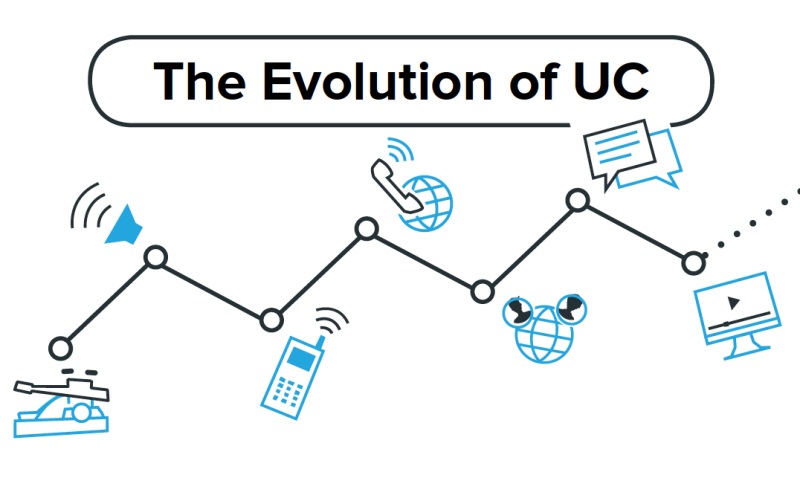History of Unified Communications
Unified communications is a developing technology which brings a wide range of communications into one platform. To be specific, calls, video calls, mails, video chats, web based meeting and so forth into one platform. Furthermore, the unified communications platforms such as ezTalks attempt to make the communications devices be independent or give isolate applications to all platforms.
Now, we look into the history of unified communications (UC) briefly.

Invention of the first voice over IP (VoIP)
The unified communications history lays its foundation in the first invention of the voice over IP (VoIP) back in the late 1980’s and mid 1990's. By this time we were all focusing on possible ways to save on cash by setting voice over their information circuits. At that point Cisco purchased an organization called Celsius who was investigating making VoIP to the genuine telephones and not simply moving voice parcels as information bundles crosswise. This was a bet on Cisco’s part since everybody still depended on storehouse equipment based PBX switches and even the switch vendors argued that the idea won’t work.
This was the initial endeavor to make voice an application to save on cash which was being undertaken by Cisco around the mid to late 1990's by utilizing the term AVVID. At that point, with the development of the Linux operating system, different new companies started reflecting Cisco’s case by building a shabby PBX with elements to give to medium or smaller organizations.
Using the same message or mail server
The second part of unified communications was later seen in the merging of phone to be able to email, message, and fax mail in a similar Message Store or Mail server.
Today, the voice is dealt with as only an application running on your system which a strong conveyance convention called Session Initiation Protocol (SIP). What is special about this is currently voice can be blended into your corporate applications too. For example, a collection of users can be chipping away at an exploration extend all utilizing a similar system based application and from the application they can set up telephone calls between scientists or even raise it to a phone call. This will give genuine ongoing joint effort, which organizations have been scanning for and is at long last now being conveyed. This is the genuine development that will be the concentration point in this decade this makes me think what the unified communications will look like in the future.
What will unified communications look like later on?
It's never simple to anticipate the future, and doing as such with certainty regularly brings about humiliation. Be that as it may, it’s significantly less demanding to identify trends and along these lines make strides important to set up an association for progress. For example, there are right now some unmistakable trends happening inside the unified communications (UC) space. UC has hit its walk as of late with steady advancement from cumbersome, frequently problematic systems to the present streamlined and much more adaptable cloud-based solutions such as ezTalks Cloud Meeting. Be that as it may, UC is proceeding to consistently advance with a great part of the headway now focused on adequately utilizing the developing number of cell phones entering the business condition. Moderate assessments put the versatile development rate at 15 percent for every year during that time 2020.
As portability has developed, user dependence on cell phones and tablets has intensified with these cell phones now assuming a conspicuous part in empowering and enabling a variety of business communication channels including dynamic access to content informing, video conferencing and voice communications - paying little heed to where users are geologically. In the meantime, there has been a shift in gadget proprietorship with the "bring your own device" (BYOD) trend grabbing hold inside associations of all sizes. To such an extent, actually, that Gartner predicts that half of bosses will require employees to supply their own particular work gadgets by 2017.
Justifiably, as BYOD develops, the emphasis will intensify on engaging specialists with the capacity to redo and customize how they utilize their own particular gadgets to speak with collaborators, clients and suppliers. For associations to remain on top of things - to future-evidence its ventures – they should have an adaptable unified communications system with an instinctive entrance. Like the 100 percent cloud-based ezTalks system, the fate of the UC plan of action is a solution that enables users to not just deal with their inclinations and settings from anyplace all alone individual gadget, but it is likewise dependent upon the underlying system being one worked around the users' needs.
What makes a completely cloud-based solution like ezTalks different is that it spins around the user, furnishing all employees with the capacity to oversee everything them from anyplace, utilizing any gadget. This independence is pivotal considering what number of employees now grasps the dependably on the business mantra of operation. The present millennial user expects a much more instinctive client experience that lone originates from technology that is developed starting from the earliest stage one end goal: user strengthening.